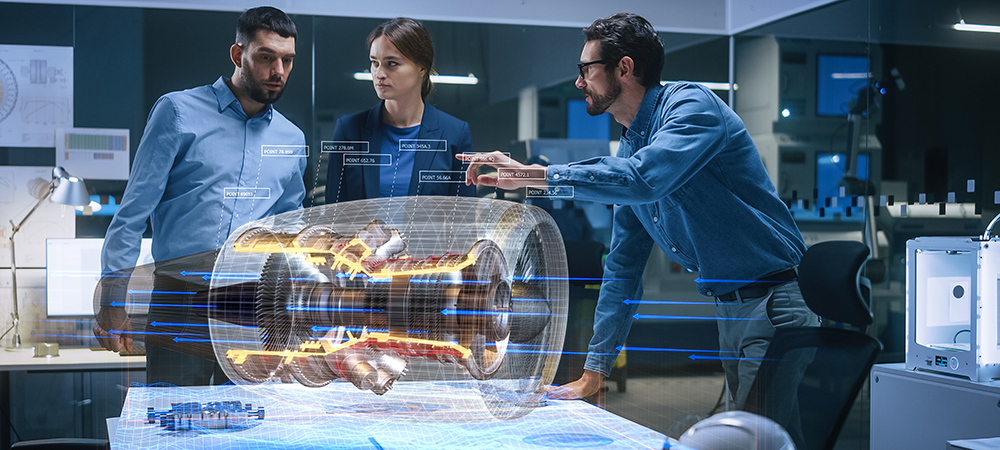The future of travel is set to be transformed by a range of powerful megatrends, from emerging technologies to societal and economic trends says Gustavo Pina at SITA Lab.
The shifting staff culture and great resignation led to a reduction in the workforce due to diminished travel demand during the pandemic, a rapid increase owing to a faster-than-expected recovery, and staff turnover resulting in lower proficiency levels. To address this, airports must invest in rapid upskilling tools, such as Virtual Reality , Augmented Reality, VR, AR, for training and advanced operations management platforms that provide a force-multiplier effect.

Cloud and agility
Cloud technology makes the digital journey and cutting-edge IT affordable and accessible for regional or cost-restricted airports. With leading passenger processing capabilities accessible via the cloud, airports can enable shared common use approaches cost-effectively, saving on infrastructure, space, and maintenance. Not only that, but they are also well-placed to embrace additional capabilities as they choose, such as self-boarding, self-bag drop, off-airport processing, and more.
A combination of highly skilled, flexible staff and agile cloud solutions supporting automation will ensure resilience in an uncertain future.
Digital travel
If there is one trend that holds a high impact today and will also exert a massive influence in the future, it is the concept of digital travel. Millennials and younger generations are leading the charge in this regard, as they are increasingly reliant on digital tools and solutions to make their travel experiences more efficient and convenient.
The central components of digital travel are digital identity and biometrics. These technologies allow travellers to move through the travel process seamlessly and securely, from check-in and security to boarding and arrival. For example, SITA Smart Path is a seamless airport identity management solution that enables travellers to use their face as their passport and boarding pass while their mobile device acts as a remote control for their travel experience.
To fully realise the potential of digital travel, however, there needs to be a harmonised and standardised approach to digital identity and biometrics across the industry. This requires collaboration between airlines, airports, and government agencies to establish common standards and protocols for identity verification and biometric authentication.
Digital identity
One key area of focus is border control policies and practices. Governments set the acceptance criteria for identity and biometric standards, and these need to be designed and implemented in concert with the rest of the airline and airport processing systems. This includes developing self-service facilities for travellers, such as Common Use Self Service for check-in, self-bag drop, and e-gates for border control. Online and mobile solutions for eVisas, Electronic Travel Authorisations, ETAs, check-in, and digital queuing must also be integrated into the overall travel process.
Pre-clearance is another area where digital technology can play a significant role in improving the traveler experience. By allowing travellers to obtain border entry approvals before boarding their flights, pre-clearance can reduce wait times and improve the overall efficiency of the travel process.
Ensuring advanced passenger processing, APP is available for passengers and biometric enabled travel will be key foundational pillars to support the digital travel experience of tomorrow.

Multimodal transport
The future of travel lies in multimodal transportation, which involves collaborating across different travel industries, including air, rail, cruise, and ferry. By integrating logistics and operational systems across various transport verticals, we can offer passengers real-time information on their journey and create a seamless travel experience.
Inter-modal digital travel is a key component of multimodal transportation, enabling passengers to book and track their journeys across various modes of transportation. Providing multi-leg passenger and baggage processing ensures that passengers do not have to worry about managing their luggage or check-ins during their journey.
This digital passenger experience can be replicated across other modes of transport. For example, biometric boarding would allow cruise passengers who have registered their passport and biometrics on the cruise app to embark on the ship using only their face.
Blockchain and MRO
Blockchain technology can securely store and share information about goods and their movements, providing a transparent and secure way to track customs clearance and HS code processing. The air transport industry spends $50 billion annually on aircraft spare parts. Yet, the tracking and tracing of serialised spare parts as they move between airlines, lessors, and original equipment manufacturers, OEMs remains largely manual and paper dependent.
Until recently, there was no single view of how to track hundreds of millions of records of transactions between these entities, exacerbating risk and cost. To address this challenge, SITA has developed an MRO Blockchain solution. This digital platform allows seamless and detailed collaboration among all parties involved in the manufacturing, repair, and usage of aircraft parts. PwC estimates that the use of blockchain could cut MRO costs globally by around 5% or US$3.5 billion.
Urban air mobility
Urban Air Mobility, UAM offers a promising solution to speed up passenger transfers for airports and airlines. By operating within their own airspace, UAM flights can provide a nimble extension to long-haul flights and offer a just-in-time travel experience that seamlessly aligns with the airport’s flight schedule.
The launch of UAM services in cities will require the development of an advanced aviation ecosystem on the ground and in the air. An entire ecosystem is necessary to make UAM a scalable, seamlessly integrated reality. Collaboration between partners in air traffic management, infrastructure, and operations to build the ecosystem required to bring urban air mobility to life.
UAM flights can leverage real-time flight data from airports to enhance their value and align their schedules accordingly. This would ensure that UAM flights to and from the airport match the primary flight schedule, minimising wait times at the terminal.



